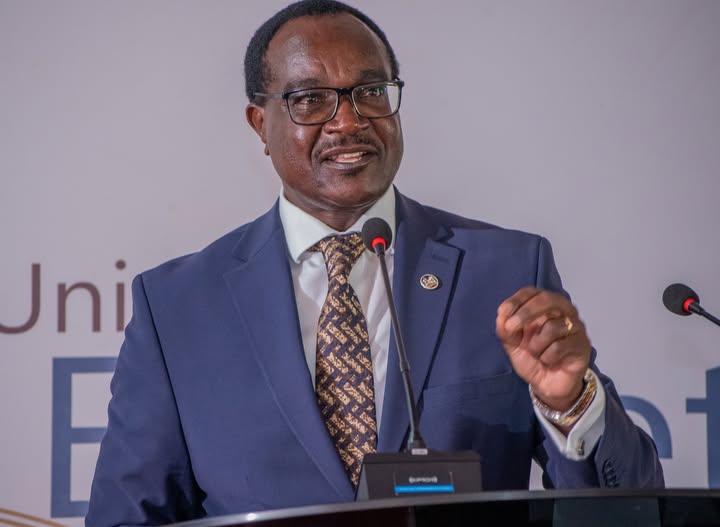A significant shift in the leadership of the junior school: Secondary school educators will now be in charge of the new administration.
With the establishment of new leadership frameworks for junior secondary schools, which include grades 7, 8, and 9, the Kenyan educational system is prepared for major reforms. In a significant change from the existing system, where primary school heads are in charge of both primary and junior secondary education, the Ministry of Education has announced that secondary school teachers will be in charge of these schools starting next year. This step is a component of the broader Competency-Based Curriculum (CBC) reform, which seeks to raise the standard of instruction and improve management procedures in schools throughout the nation.
The most recent rules from the Ministry state that each junior secondary school will be headed by a principal, assisted by deputy principals and senior masters, each of whom will have specific responsibilities related to various administrative and academic functions. This reform signifies the division of duties between elementary and junior secondary education, with primary school heads now concentrating on grades 1–6 and a new group of seasoned secondary school administrators assuming leadership of junior secondary schools.
The introduction of a Curriculum-Based Establishment (CBE), which will direct the management of junior secondary schools, is a major aspect of this reform. The Ministry’s document establishes a number of criteria to guarantee a seamless and successful transition to the new leadership model. The CBE describes the staffing arrangements for junior secondary schools, ensuring that the appropriate number of instructors are available to manage the assigned workload.
Teachers’ Workload: Junior secondary school teachers will be required to teach at least 27 classes each week. The goal is to make sure the pupils are taught well in accordance with the CBC. To prevent excessive workloads, the maximum number of students in each class will be restricted.
Administrative positions: When a school has two deputy principals, one will be responsible for academic matters, while the other will be in charge of administration and other non-academic activities. The principal will teach 10 classes each week, while the deputies and senior teachers will each teach 12 classes per week.
Establishment of Senior Positions: The size of the school and the number of streams it has will determine the creation of deputy principals and senior masters. To oversee the daily operations and ensure smooth operation, bigger schools will need a larger administrative workforce.
House Teachers and Boarding Facilities:
In schools with boarding options, there will also be house teachers (Senior Masters) responsible for overseeing the well-being and discipline of students in the boarding area. The size of the boarding facility will determine how many of these home instructors are assigned, with one instructor for every 270 pupils.
Lesson Allocation and Staffing: The Ministry has established a straightforward methodology for calculating the number of teachers needed for each learning area, guaranteeing that schools have the right staff based on the topics covered and the amount of classes taught each week.
The Ministry has established a structured method for calculating the number of teachers needed for each learning subject. The total number of lessons for each subject is determined by adding the lessons taught for each grade. For example, the table in the Ministry’s document lists the budget for topics like English, Math, Religious Education, and Social Studies. The total number of teachers needed is determined by the total number of courses offered across the grades, with each subject receiving a set number of lessons each week.
For instance, the total number of teachers needed for English, which is taught in 15 courses throughout grades 7, 8, and 9, is 0.555. Dividing the total number of classes by 27, which is the typical number of classes a teacher is expected to manage each week, yields this result.
The overall number of instructors a school needs is determined by summing up the number of teachers needed for each subject, making certain that the school has enough employees to satisfy the students’ educational needs. This approach guarantees that schools have adequate personnel and that instructors are not overworked.
The Consequences of the Recent Administrative Reforms
A notable change in the Kenyan educational system is the move to secondary school-led management for lower secondary schools. By dividing the leadership of primary and junior secondary schools, more specialized and targeted management is possible at both levels. By assigning experienced secondary school instructors to head junior secondary schools, the Ministry hopes to improve the quality of education and make sure students have the best possible assistance as they move from primary to secondary education.
The possibility of better school management is one of the key advantages of this new system. With their expertise in handling bigger student bodies and more complex curricula, secondary school principals are better able to meet the demands of junior secondary schools. Furthermore, the introduction of senior masters and deputy principals will give the principals the necessary assistance so they can concentrate on their academic and administrative responsibilities.
Additionally, secondary school instructors can advance their careers thanks to this new infrastructure. The Ministry is creating a clear route for teachers to progress in their careers and assume greater responsibilities by opening up leadership roles in lower secondary schools.
The Responsibilities of Elementary School Principals
Although primary school heads will no longer be in charge of junior secondary schools, their role in overseeing Grades 1–6 is still vital. Primary school heads will be instrumental in making sure that students are adequately prepared for the move to junior secondary school, since the CBC places a strong emphasis on early childhood education and the fundamental stages of learning.
The increasing intricacy of the educational system is reflected in the Ministry’s choice to divide the leadership of primary and junior secondary schools. By establishing unique leadership frameworks for each level, the Ministry hopes to guarantee that each level of education receives the attention and resources necessary for success.

